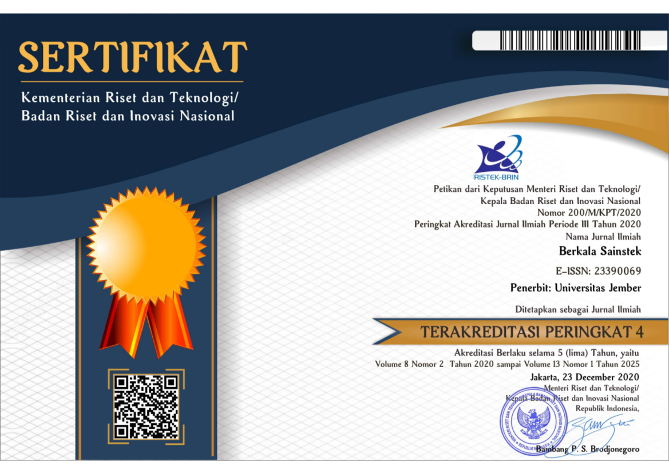Estimating The Ability of Lanceleaf Arrowhead (Sagittaria lancifolia ) in Phytoremediation of Heavy Metal Copper (Cu)
Abstract
One of Indonesia's strategies to improve the quality of its economy as a developing country is to boost industrial activity. However, the existence of industry has a detrimental consequence, one of which is heavy metal copper pollution (Cu). Phytoremediation is one of the ecologically acceptable pollutant treatment methods. Phytoremediation approaches using Sagittaria lancifolia plants are thought to be capable of overcoming heavy metal Cu contamination in the environment. This research is a preliminary study into the limitations of the Sagittaria lancifolia plant's capacity to absorb heavy metal Cu. This study employed an experimental technique, which was carried out between March 26 and April 7, 2021, in the Purwodadi Botanic Garden's Greenhouse, with four concentration variations, namely 0 mg/L, 1 mg/L, 3 mg/L, and 5 mg/L. According to the result of this research, the plant Sagittaria lancifolia may remediate heavy metal Cu at a maximum concentration of 5 mg/L. This is due to the fact that at this concentration, the Sagittaria lancifolia plant presents indications of death, particularly severe chlorosis and necrosis.

This work is licensed under a Creative Commons Attribution-NonCommercial 4.0 International License.




.png)



